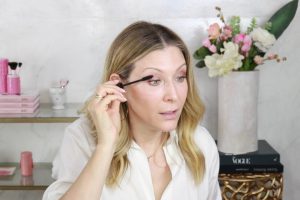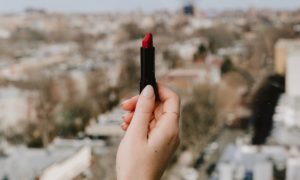Most recently updated 1/12/21
Phthalates. Besides being tough to pronounce (THA-lates, by the way), what are they exactly? Why do they show up in our products? Are they harmful or restricted for use? Should we avoid phthalates in our cosmetics? And, if so, how?
Before we answer these questions, let’s get a basic understanding of what exactly phthalates are.
So, what are phthalates anyways?
There are many different types of phthalates out there and they’re used in lots of different products ranging from industrial flooring to children’s toys to makeup. Some phthalates are proven or suspected to be harmful both to our health and the environment.
We can divide the many different phthalates into two separate groups: 1) high phthalates, or those with a high molecular weight and 2) low phthalates, those with a low molecular weight. (If you’re really interested, a phthalate is categorized as either high or low based on the number of atoms in its chemical backbone.)
High phthalates are mostly used as “plasticizers.” This means they’re added to plastic products like toys, food packaging, and roofing to make the plastic more flexible and workable.
Low phthalates are used as solvents or fixatives. This means they’re used to either stabilize materials or dissolve certain substances. They’re added to things like air fresheners, medications, and personal care products (especially those with fragrances), including makeup.
Can phthalates affect my health?
Based on research, scientists suspect that low phthalates in personal care products – including makeup – disrupt the endocrine system [1], which contributes to reproductive dysfunction. Both high and low phthalates have also been linked to lower IQs in infants [2] who’ve been disproportionately exposed in utero, the early onset of puberty in girls [3], and reduced sperm count in men [4].
How do I get exposed? How much exposure is harmful?
We’re exposed to phthalates in makeup in three ways:
- Skin absorption – when we apply products topically
- Ingestion
- Inhalation – when we spray products like perfumes, hairsprays or toners
Inhalation is likely the most significant path of exposure because phthalates easily become airborne [5].
Like with pesticides in food, we don’t know exactly how much exposure and over what time period phthalates can start to negatively impact our health. Scientists also don’t fully understand why some people are more affected by phthalates than others.
But doesn’t the FDA regulate phthalates and other toxins?
Despite their suspected risks, low phthalates aren’t banned yet. In 2008, Congress passed a bill that banned a subset of high phthalates in children’s toys. However, in the U.S. some phthalates are still legal for use including in personal care products. In comparison, in 2004 the European Union banned the most commonly used phthalates in personal care products.
So, what’s the answer? Should I avoid phthalates?
Research shows that your body registers any changes in the use of toxins like phthalates very quickly [6]. Reducing use of personal care products with toxins can actually lower levels of chemicals in the body in only a few short days. We have found that many women prefer the peace of mind that comes with using phthalate-free makeup and personal care products.
How can I tell which products are phthalate-free?
Unfortunately, cosmetics labels often don’t disclose when phthalates are used. Ingredients in fragrance are considered a trade secret, so companies aren’t legally required to label the ingredients included in fragrance – whether that be a perfume or a scented makeup product. This means that when phthalates are used as scent carriers, the label simply says, “fragrance.”
A trick to avoiding phthalates is to choose products without “fragrance,” “synthetic fragrance,” “parfum,” or “-phthalate” on the label.
If you are interested in more specifics, the low phthalate most frequently used in personal care products is called diethylphthalate (DEP), and is often used in perfumes and scented products like lotions. Other forms include dibutylphthalate (DBP), typically used in nail polish, dimethylphthalate (DMP), typically used in hairspray, and benzylbutyl phthalate (BBP), diethylhexyl phthalate (DEHP), and dicyclohexyl phthalate (DCHP).
You can also choose to shop at sites that screen ingredients rigorously so that you don’t have too.
NakedPoppy bottom line: we avoid phthalates
To play it on the safe side, we like to use products formulated without phthalates and want to make it easier for you do the same. That’s why NakedPoppy products are formulated without phthalates.
Get “shockingly accurate” clean beauty picks. Take your beauty assessment.
This article has been reviewed by Tim McCraw, PhD chemist and CEO of Skin Science Advisors.
Let us know in the comments: what are your reactions to this information about phthalates?
References
[1] Disrupt the endocrine system:
https://www.ncbi.nlm.nih.gov/pubmed/28758506
[2] Linked to lower IQ in infants:
https://www.ncbi.nlm.nih.gov/pmc/articles/PMC4488303/
https://www.ncbi.nlm.nih.gov/pmc/articles/PMC4113841/
[3] Linked to early onset of puberty:
https://www.ncbi.nlm.nih.gov/pmc/articles/PMC4262586/
[4] Linked to reduced sperm count:
https://www.ncbi.nlm.nih.gov/pmc/articles/PMC4605371/
https://www.ncbi.nlm.nih.gov/pmc/articles/PMC4726156/
[5] Easily become airborne:
https://ehp.niehs.nih.gov/1409151/#tab1
https://www.ncbi.nlm.nih.gov/pmc/articles/PMC1247566/
http://www.tandfonline.com/doi/abs/10.1080/03067318108071545
[6] Changes in use of toxins like phthalates register quickly:
https://www.ncbi.nlm.nih.gov/pmc/articles/PMC2873014/
For further reading:
- “Phthalates,” American Chemistry Council
- “Phthalates,” U.S. Food and Drug Administration
- “A survey of phthalate esters in consumer cosmetic products,” U.S. Food and Drug Administration
- “Dimethyl phthalate (DMP),” Australian Government Department of Health
- “Senate Approves Feinstein Legislation to Impose a Nationwide Ban on Phthalates in Children’s Products,” press release
- “Environmental Contamination with Phthalates and Its Impact on Living Organisms,” The Journal of Society of Ecological Chemistry and Engineering






Comments